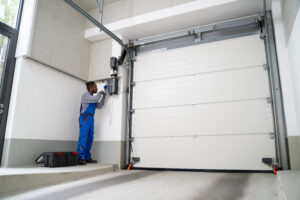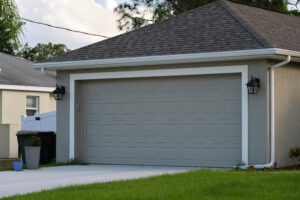Choosing the right garage door is more than just the aesthetics. It also entails functionality and energy efficiency. Additionally, the right option should boost overall long-term value.
When ready to get a new one, a decision you have to make is whether to go with insulated or non-insulated. It’s good to note that each decision has its own advantages and disadvantages. You will also have to pay attention to various factors. Some of these include location and lifestyle.
This article explains key differences between the two. With this information, you will be able to determine the best one for your needs.
What is an Insulated Door?
It’s designed with multiple layers of material. The reason for doing this is to help regulate temperatures and boost overall energy efficiency. It’s usually made from steel or aluminum panels. It’s then filled with padding materials. Some great examples include polyurethane and polystyrene.

Is Your Garage Door Insulated?
With such features, it’s able to act as a barrier against external weather conditions. It does a great job of stabilizing indoor temperatures. This goes a long way in keeping the area comfortable year-round. This is quite important especially if the space is attached to your home. It’s also useful if you use the area for other activities beyond parking.
What is a Non-Insulated Door?
It’s constructed with a single layer of steel or aluminum. It usually has no extra shielding materials. In addition to this, it’s lighter in weight. It’s also quite affordable. These reasons make it popular for individuals looking for a basic and budget-friendly solution.
Despite such benefits, it lacks insulation. This means that it offers minimal protection against outdoor temperatures and noise. Due to this, it’s best suited for detached garages. It also does quite well in those regions with mild climates. This is because such areas don’t require extensive temperature control.
It meets basic security and aesthetic needs. However, it does very little to improve energy efficiency.
Key Differences
Energy Efficiency
Insulated ones come fitted with layers of shielding materials. They do an excellent job of regulating temperatures. This is very useful for your home. The reasoning behind this is that it reduces heat transfer. It also eases the load on your HVAC. This is possible because it’s able to maintain a stable indoor climate. The result of this is lower energy bills. It also boosts your home’s overall efficiency.
On the other hand, a non-insulated option provides little to no thermal resistance. This makes it less effective. This is especially true in extreme weather conditions. The end is an increase in the heating and cooling costs.
Durability and Strength
Insulated options have padding materials at the center. They also have a backing layer. This creates a very strong and rigid structure. This multi-layered build makes them more resistant to dents and warping. It also minimizes the chances of wear and tear. This is especially true in high-traffic households. It’s also quite ideal for areas prone to harsh weather.
In contrast to this, non-shielded ones are usually single-layer. This means they are prone to damage. This can emanate from impact or prolonged exposure to the elements. If you are in search of greater strength and durability, this option might not be the best for you.
Noise Reduction
A standout benefit of padded entryways is their ability to minimize noise. This comes about as a result of the extra layer of cushion. This feature acts as a sound barrier. It helps dampen outside noises like traffic and construction. This is quite valuable for those homes located in busy areas. It’s also useful for garages attached to living spaces. This is because noise can easily travel indoors.
On their part, non-sealed entryways offer little to no soundproofing. Using them can lead to a noisier environment. This can be the case both inside and within the adjacent rooms of your home.
As you have seen, the two choices have their own unique advantages and disadvantages. Your choice between the two will hence depend on your specific needs. It will also be determined by your budget and how you use the space.
An insulated door is better for temperature control and noise reduction. On the other hand, a non-shielded entryway is ideal for individuals looking for a more cost-effective solution. You need to weigh the pros and cons of each. This will be the only way to make the best possible decision. For better results, consider consulting the right professionals. Experts have the needed experience to suggest the ideal option for you.




